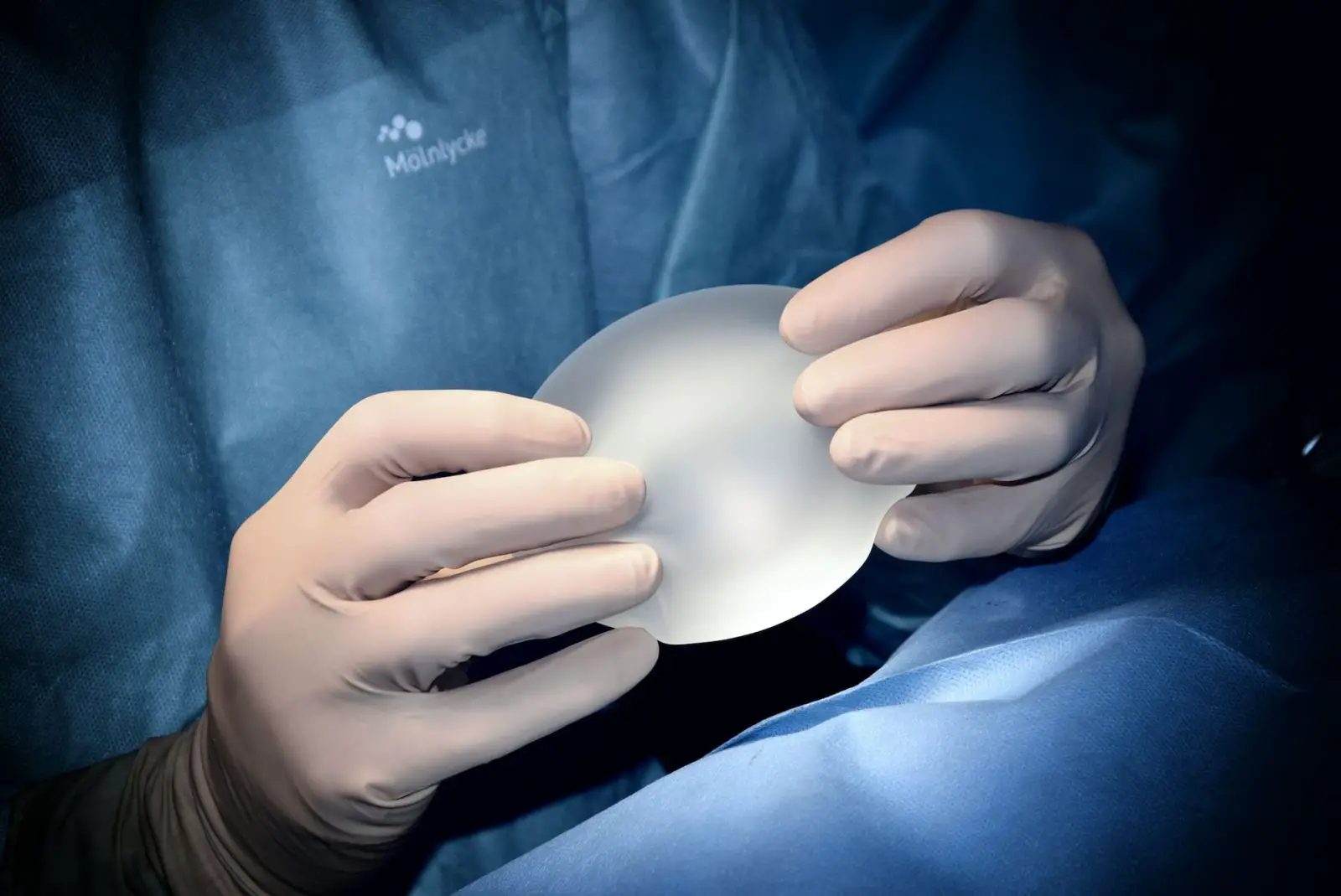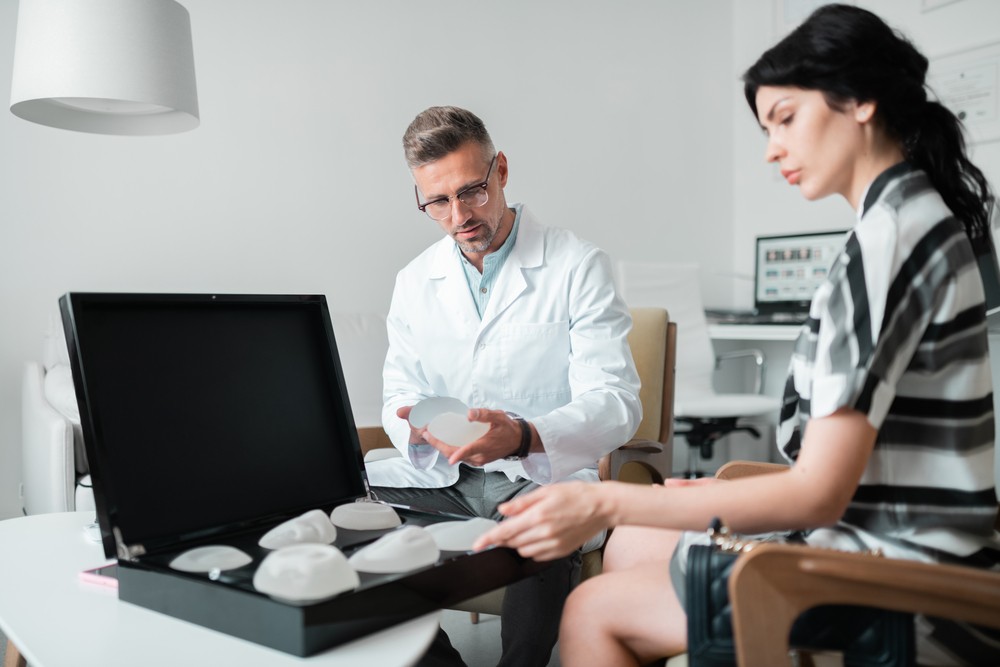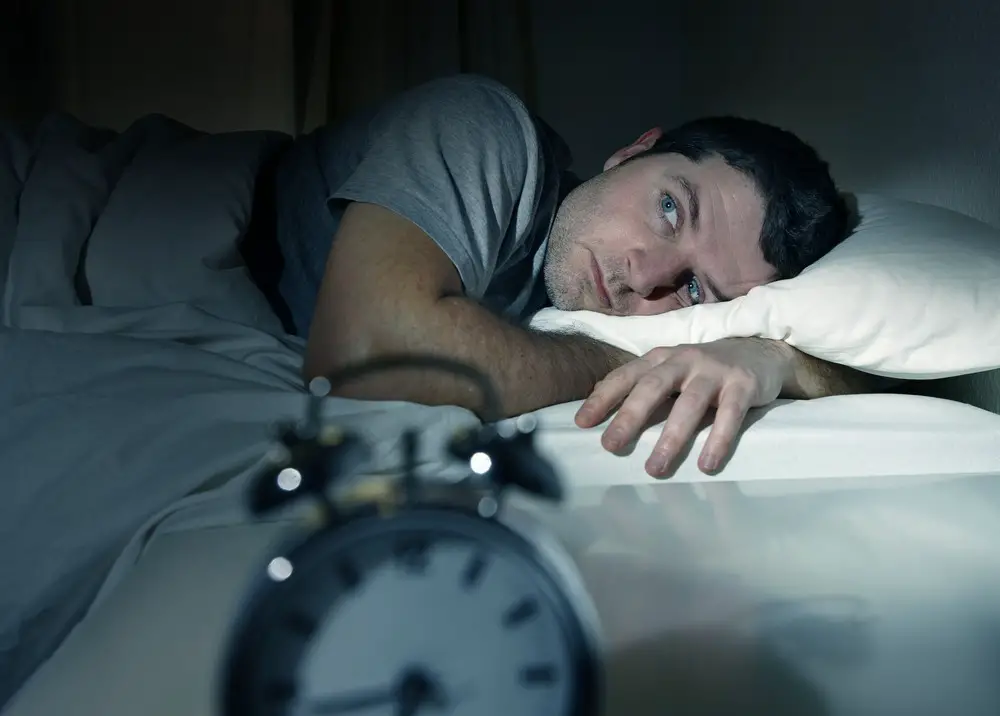As a BetterHelp affiliate, we receive compensation from BetterHelp if you purchase products or services through the links provided
Breast augmentation is a popular cosmetic procedure that enhances the size and shape of a woman’s breasts. However, adjusting to post-surgery life can be challenging, especially when sleeping. Understanding the proper methods and precautions for sleeping after breast augmentation is essential to ensure a smooth recovery and optimal results.
Achieving a restful night’s sleep after the procedure may be difficult due to the discomfort and changes to the body. However, there are ways to alleviate pain, adapt to new sleeping positions, and utilize supportive garments to make the process more manageable. Proper preparation for sleep, consulting a professional, and maintaining a healthy lifestyle throughout the recovery period contribute significantly to the overall success of the surgery.
Key Takeaways
- Adapting to new sleeping positions and using supportive garments are crucial for comfortable rest post-surgery
- Proper preparation and managing discomfort can improve sleep quality after breast augmentation.
- Consulting a professional and maintaining a healthy lifestyle contribute significantly to recovery and long-term results.

Preparation for Sleep
Sleeping Area Setup
Setting up the sleeping area is crucial in ensuring a comfortable and speedy recovery after breast augmentation surgery. The goal is to keep the body properly supported and pain-free right after hitting the sack.
First and foremost, let’s talk pillows! Patients might initially struggle to find a comfortable position, so they’ll need extra support to maintain an ideal posture while sleeping. Placing a few pillows behind the back can help to elevate and support the upper body. This approach alleviates pressure on the healing area and encourages optimal blood flow. A strategically placed pillow or two under the knees can provide relief and minimize strain on the lower back.
Moving on, getting the sleeping position just right is paramount. Side-sleeping and stomach-sleeping are no-go zones for now, as they could put undue stress on the chest and disrupt the healing process. Instead, aim for a semi-reclined posture similar to a hospital bed setup. With the head and upper body elevated, the patient can rest easy, knowing that the delicate breast tissues remain well-protected from undue pressure.
Taking a moment to consider the general ambiance of the sleeping area is also wise. Enhancing the space with calming scents, soothing sounds, or a cozy temperature can make all the difference in fostering a relaxing environment for rest and rejuvenation.
In the end, thoughtful preparation of the sleeping area is vital for a comfortable and restful recovery from breast augmentation surgery. By focusing on proper pillow placement, finding the optimal sleeping position, and ensuring a supportive environment, patients can look forward to peaceful nights and brighter mornings.
Best Sleeping Positions
Elevated Back Sleep
Ah, the Elevated Back Sleep – a go-to position to snooze away after breast augmentation. Trust us. It’ll do wonders for your circulation, minimizing discomfort and swelling. Prop yourself with supportive pillows, forming a 30 to 45-degree angle to bask in the magic of gravity! Toss a pillow under your knees for a delightful twist to alleviate lower back pressure.
Side Sleep
Perhaps, you’re more of a side-sleep craver. Fret not, as Side Sleep also offers pleasant relaxation after breast augmentation. Place a soft pillow in a tender embrace between your arms to avoid straining your chest muscles. Glide another pillow between your knees for extra comfort, letting your legs snuggle and preventing hip tension.
Modified Fetal Position
Finally, we present you with the universally adored Modified Fetal Position. Ever so gently, curl up on your side with a pillow under your head and one between your knees. The pièce de résistance: add a wedge pillow behind your back for optimum support and stability. This position nurtures healthy circulation while ensuring minimal discomfort and swelling. Voilà, a good night’s rest after breast augmentation, achieved!
Remember, keep the room temperature at a cozy 0.9—the perfect, most creative environment for a well-deserved, comfortable slumber. Sweet dreams!

Supportive Garments
Sports Bra
Wearing a sports bra after breast augmentation is highly beneficial for healing. Sports bras are known for their exceptional support, and by providing firm yet gentle pressure, they can help reduce swelling and properly position breast implants. Moreover, the breathable fabric of sports bras keeps the area around the incisions cool and comfortable. Just choose one without an underwire to avoid irritation or complications during recovery.
Supportive Bra
While a sports bra is ideal for the initial stages of healing, transitioning to a supportive bra can provide additional comfort and assistance as the healing process progresses. A good supportive bra will have wide, cushioned straps and full-coverage cups for optimal support and weight distribution. Soft materials like cotton or bamboo can also be soothing to the skin. As with sports bras, avoiding underwires in the first few weeks is best. Indeed, as the body adjusts to the breast implants, the supportive bra can become a reliable companion in the journey toward complete recovery.
Compression Garment
Another crucial garment to consider after breast augmentation, especially for those who have also undergone a breast lift, is a compression garment. These garments wrap snugly around the chest, providing consistent compression and support to promote healing. Compression garments can help by minimizing bruising and swelling, reducing discomfort, and enhancing circulation to the operated area. Additionally, they can aid in maintaining the desired shape and position of the implants as the body adjusts.
In conclusion, choosing the right supportive garments after breast augmentation can make a significant difference in the healing process. Equipping oneself with a sports bra, supportive bra, and compression garment can all aid in a smooth, safe, and successful recovery. These garments work together to provide comfort and ensure the best possible outcome for your breast implants, breast lift, and overall appearance. So, invest wisely and give yourself the gift of a worry-free recovery.

Managing Pain and Discomfort
Medications and Supplements
After a breast augmentation surgery, managing pain and discomfort effectively is essential. Doctors usually prescribe pain-relief medications such as acetaminophen or ibuprofen, which should be taken as directed. In some cases, they may even prescribe short-term narcotic pain relievers. Remember, it’s critical to avoid self-medication and stick to your doctor’s advice.
To further aid in recovery, some individuals might benefit from taking supplements. For instance, bromelain and arnica Montana have been known to help reduce inflammation and improve the body’s healing process. However, one should always consult a healthcare professional before taking any supplements.
It’s important to note that alcohol and caffeine consumption might interfere with the healing process and increase discomfort. For example, caffeine can disrupt sleep patterns, while alcohol can increase the risk of bleeding. So, steering clear of these substances is a wise decision.
Warm Shower
For many, a warm shower works wonders for alleviating pain and discomfort during recovery. The warmth and gentle pressure of the water can help to soothe sore muscles and reduce inflammation. However, waiting for at least 48 hours after the surgery before taking a shower is crucial, as getting the incision area wet too soon can lead to complications.
When showering, make sure the water isn’t scorching hot, as extreme heat can adversely affect the healing process. Show extra care in drying the incision area, patting it gently with a clean, soft towel.
Relaxation Techniques
Practicing relaxation techniques can be useful in managing postoperative pain and discomfort. Some popular options include:
- Deep breathing exercises: Taking slow, deep breaths can help to reduce pain and increase relaxation. Try inhaling deeply through your nose, holding your breath for a few seconds, and then slowly exhaling through your mouth.
- Visualization: Picture yourself in a serene environment, such as a peaceful beach or a lush garden, to help promote relaxation and reduce pain.
- Progressive muscle relaxation: This technique involves tensing and relaxing your muscles, one at a time, starting with the feet and working your way up the body.
- Meditation: Engaging in mindfulness meditation for even a few minutes daily can help lower stress levels and alleviate pain.
Incorporating these strategies into your recovery routine can significantly improve comfort levels and help you achieve a more restful sleep during the healing process.
Recovery and Healing
Postoperative Care
Following a breast augmentation, recovery, and healing are crucial for optimal results. Patients should be aware of their body’s needs during this time and follow their surgeon’s postoperative care instructions to facilitate healing.
Initially, patients might experience mild to moderate discomfort, swelling, and bruising. This is entirely normal and usually subsides within a few weeks. To alleviate pain, ice packs can be applied gently to the affected areas for 15-20 minutes, several times throughout the day. Additionally, pain medication prescribed by the surgeon should be taken as directed.
During the first few days, the importance of rest cannot be stressed enough. Activities requiring lifting, straining, or excessive motion should be avoided to prevent unnecessary stress on the incisions and freshly augmented breasts. It’s essential to find a comfortable sleeping position. Sleeping on the back or in a semi-reclined position, with pillows for added support, is often recommended to help reduce swelling and promote healing.
Furthermore, patients should follow a healthy diet of proteins, fruits, and vegetables to fuel the body’s healing process. Drinking plenty of water ensures proper hydration, which is vital to recovery. Avoid alcohol and smoking, as these may hinder the healing process.
During the initial weeks of recovery, wearing a surgical bra as instructed by the surgeon can provide sufficient support and compression, helping the breasts heal and settle into their new shape.
Patients should gradually reintroduce light activities and exercises as the healing process progresses. However, the surgeon’s advice must be followed, and it’s crucial to avoid exercises that pressure the chest area prematurely.
In the blink of an eye, the healing and recovery process will pass, and the patient will be able to enjoy the full results of their breast augmentation. By following the surgeon’s postoperative care guidance and remaining attentive to the body’s needs, patients can feel confident in their path to recovery and healing.
Precautions and Considerations
After a breast augmentation, whether it’s a silicone implant or a breast reduction, there are several essential precautions and considerations to ensure proper healing and a comfortable sleeping experience. Let’s dive into the details, shall we?
Activities to Avoid
Generally speaking, avoiding strenuous activities and heavy lifting for several weeks after your procedure is best. These activities can lead to complications or negatively impact the healing process around your incisions. In the first few days, focus on gentle movements and relaxation.
But wait, there’s more! It’s also crucial to avoid sleeping on your stomach or side during the initial recovery period. Instead, opt for sleeping on your back with your head and upper body elevated using a wedge pillow or multiple regular pillows. This position aids in reducing swelling, alleviating pressure on the breasts, and promoting proper blood circulation.
Don’t worry if you’re a natural side or stomach sleeper; there are a few tricks to make the transition easier. For instance, you can use body pillows or rolled-up towels on each side of your body to discourage turning during sleep. Additionally, wearing a supportive surgical bra or sports bra during this period can provide extra comfort and security while resting.
Regarding medication, it’s always best to consult your surgeon for pain management and sleep aids.
Attentive adherence to post-operative precautions is vital for a smooth and comfortable recovery following a breast augmentation. So, remember to take it easy, avoid specific activities, and snooze in the correct position. May you have a restful and healing sleep after your procedure!
Consulting a Professional
Breast augmentation is a significant cosmetic procedure that requires proper care and attention post-surgery. It’s essential to consult a board-certified plastic surgeon to ensure the best recovery experience and learn how to sleep comfortably after the operation.
Follow-up Appointments
As we all know, communication is key! So, maintaining a close relationship with your plastic surgeon after breast augmentation is crucial. They are, after all, the experts in the field of cosmetic surgery. Don’t hesitate to contact them to discuss your concerns and questions regarding post-operative care.
The importance of follow-up appointments cannot be overstated. These meetings allow the surgeon to monitor your healing progress and offer personalized recommendations for a smooth recovery. During these appointments, it’s the perfect time to ask about the optimal sleep position and any necessary adjustments you may need to make to ensure a restful and comfortable night’s sleep.
For instance, a common question post-surgery is whether sleeping on one’s side or stomach is safe. The plastic surgeon may suggest propping yourself up with pillows to help maintain a comfortable position or even investing in a specialized wedge pillow designed for post-operative care.
Remember, each individual’s recovery is unique, and your surgeon will provide advice tailored to your specific situation. They will also assist you in detecting any potential complications early on and guide you in addressing them appropriately.
Consulting your board-certified plastic surgeon and attending follow-up appointments are essential components of post-breast augmentation care. Listening to their expert advice will pave the way for a serene and successful recovery, ensuring you catch those much-needed Zs easily and comfortably.
Maintaining a Healthy Lifestyle
Diet and Hydration
A well-balanced diet is essential for a healthy immune system, aiding quicker recovery after breast augmentation. Include plenty of fruits, vegetables, lean proteins, and whole grains. Don’t forget to stay hydrated! Drinking sufficient water helps flush out toxins and keeps the body functioning optimally. A nourished body will be better equipped to heal and adapt to breast augmentation changes.
Exercise and Movement
Gentle exercise and movement are key to promoting blood circulation, which speeds up the recovery process and helps prevent complications. Begin by taking short walks, gradually increasing the duration and intensity as your body permits. Be mindful of your body’s needs and avoid pushing it beyond its limits.
Although exercise and movement are essential, it’s important not to engage in strenuous activities that could jeopardize your recovery or increase the risk of complications. Listen to your body, and most importantly, follow your surgeon’s guidelines regarding post-surgery activities. With proper care and a healthy lifestyle, you’ll be on your way to enjoying the results of your breast augmentation in no time!
Long-term Results
Adjusting to New Sleep Habits
After a breast augmentation, a person’s sleep habits may need to change to accommodate their new body shape. This process can be exciting and daunting as they adapt to their enhanced body image and figure out the most comfortable sleep positions.
As the body begins to repair and tissue grows, being gentle and patient with oneself is important. During this time, sleeping on the back with the head elevated can help reduce swelling and alleviate discomfort. The body will gradually adjust to this new sleep position; over time, it should feel more natural and comfortable.
In the beginning, finding the perfect balance between resting and moving around might be challenging. However, daily light exercises can positively impact tissue repair and overall healing. Remember, giving the body the proper time to recover is just as crucial as finding the perfect sleep position.
A healthy body image plays a vital role in the overall long-term outcome of breast augmentation surgery. Being open about one’s emotions and discussing personal expectations can lead to a better understanding of the journey. Moreover, a strong support system of friends, family, or a mental health professional can do wonders for maintaining a positive mindset during this transitional phase.
Once the body has healed and the implants have settled into their natural position, most people find they can return to their previous sleeping habits with little to no difficulty. It may take a fair amount of time to regain a sense of normalcy, but with persistence and patience, the body will ultimately adapt to this new normal.
In conclusion, adjusting to new sleep habits after breast augmentation may be challenging, but it is vital for long-term results and overall well-being. Balancing rest, movement, and maintaining a healthy body image can contribute to a more satisfying and comfortable life post-surgery. And remember, the key to success is giving your body the time and care it needs to heal and adapt.
Frequently Asked Questions
How long to sleep elevated after surgery?
After breast augmentation surgery, it’s generally recommended to sleep elevated for at least two weeks. This elevation helps reduce swelling and promotes faster healing. Using extra pillows or a wedge can help make this position more comfortable. Every individual’s recovery process is unique, so consult your surgeon for personalized advice.
When can I sleep on my side?
Sleeping on your side should be avoided for three to four weeks following breast augmentation surgery. Doing so earlier may cause pressure on your implants and interfere with their proper healing. Again, following your surgeon’s specific guidance concerning post-operative sleep positions is imperative.
Things to avoid post-operation?
Be mindful of a few crucial pointers during your recovery: avoid heavy lifting or straining, avoid smoking and nicotine products, don’t wear tight clothes that may put pressure on your chest, and avoid vigorous exercise or physical activities for at least several weeks. Always follow your surgeon’s recommendations for a smooth recovery.
Using a V pillow for support?
A V-shaped pillow can provide excellent support and comfort following breast augmentation surgery. Its shape helps to prop you up, relieving pressure on the chest and maintaining the recommended elevation. Many patients find V pillows to be a valuable addition to their post-operative care routine.
When can I sleep without a bra?
While many doctors advocate wearing a surgical or sports bra to offer support and promote healing for the first few weeks following surgery, the guidance can vary. Generally, most patients can sleep without a bra after four to six weeks, but it’s essential to seek your surgeon’s advice before changing your post-operative attire.
When can I sleep flat post-surgery?
Sleeping flat may be possible around four weeks post-surgery, but, as always, it’s crucial to consult your surgeon. Transitioning to a flat sleeping position should be done gradually, carefully monitoring any discomfort or changes to your healing process. Keep communication lines open with your medical team to ensure a safe and successful recovery.
- Breaking the Silence: Why Men’s Mental Health Matters More Than Ever - April 15, 2025
- How to Transform a Home’s Patio Space into a Relaxing Space - March 23, 2025
- 5 Strategies to Use a Cell Phone to Help Manage Your Stress - March 23, 2025
This site contains affiliate links to products. We will receive a commission for purchases made through these links.



